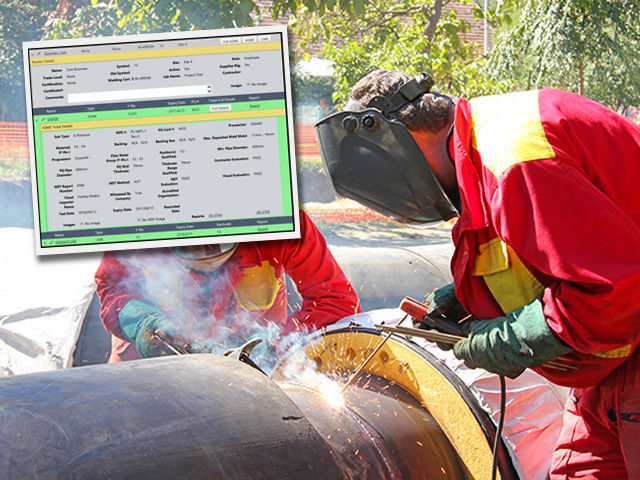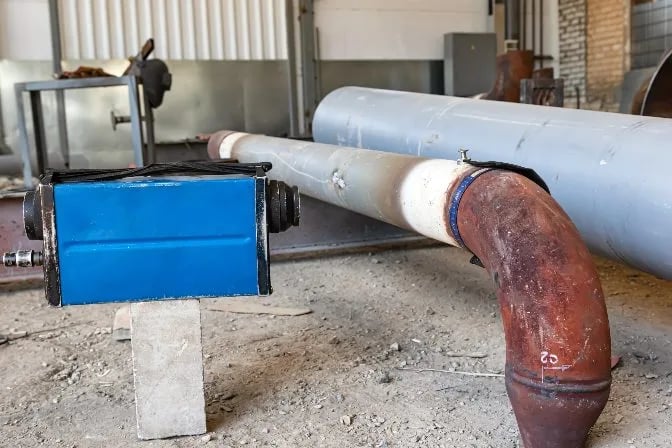Shield Your Investment: Thorough Pipeline Welding Inspection for Assurance
Shield Your Investment: Thorough Pipeline Welding Inspection for Assurance
Blog Article
Necessary Pipe Welding Assessment Tips for Quality Control
In the realm of pipeline construction, the integrity of welds holds critical significance to make certain the safety and security and performance of the whole system. From gas to improved oil items, pipelines form the lifeline of numerous markets. However how can one assure the top quality of these welds that link the pipeline sections? The solution exists in precise assessment techniques and adherence to stringent high quality guarantee requirements. By understanding the important pipe welding assessment tips, specialists can prevent possible threats, decrease pricey repair services, and support the dependability of these vital infrastructures.

Significance of Welding Inspection
Welding assessment plays a crucial duty in guaranteeing the architectural integrity and safety and security of pipe systems. By carefully analyzing welds, inspectors can identify any kind of problems or blemishes that could jeopardize the stability of the pipeline. These evaluations are crucial for avoiding leakages, tears, and other potentially tragic failures that might lead to ecological damage, monetary losses, and also loss of life.
The significance of welding assessment can not be overemphasized, as the quality of welds straight influences the overall performance and durability of the pipe. Via non-destructive testing approaches such as visual assessment, ultrasonic screening, radiography, and magnetic bit testing, examiners can spot problems that might not be noticeable to the nude eye. By identifying and addressing these issues early, welding examination aids to make certain that pipelines fulfill sector requirements and governing requirements.
Ultimately, welding inspection is an important facet of high quality guarantee in pipe building, upkeep, and repair service (Pipeline Welding Inspection). By supporting rigorous evaluation standards, market specialists can alleviate threats and maintain the safety and security and integrity of pipe systems
Common Welding Problems
Amongst the challenges encountered in pipe welding, typical defects can dramatically affect the structural honesty and performance of the bonded joints. A few of the most widespread welding problems consist of absence of fusion, porosity, splits, incomplete infiltration, and imbalance. Lack of combination happens when there is inadequate bonding in between the weld metal and the base metal, causing a damaged joint. Porosity, identified by gas pockets within the weld, can minimize the strength and make the weld susceptible to corrosion. Fractures in the weld can propagate with time, jeopardizing the architectural integrity of the pipe. Incomplete infiltration happens when the weld metal does not totally permeate the joint, causing a weak bond. Misalignment, where the weld bead is not effectively focused, can result in anxiety concentration factors and potential failing. Finding and dealing with these typical defects with detailed evaluation and top quality control processes are necessary for ensuring the dependability and safety and security of pipeline welds.
Evaluation Methods for Pipes


In making sure the architectural honesty and dependability of pipe welds, the application of strenuous examination techniques is paramount. Various inspection methods are employed to spot prospective problems and guarantee the general high quality of the welds. Non-destructive testing (NDT) techniques such as radiographic testing, ultrasonic screening, magnetic fragment screening, and liquid penetrant testing are typically utilized in pipe welding inspection. Radiographic testing entails making use of X-rays or gamma rays to detect inner defects, while ultrasonic testing makes use of high-frequency audio waves to determine flaws. Magnetic particle screening is reliable for detecting surface-breaking issues, and fluid penetrant testing is used to spot surface area splits. Visual evaluation is also crucial in pipe welding to determine any noticeable flaws or gaps. Additionally, automatic evaluation strategies utilizing innovative modern technologies like robotics and drones are significantly being utilized to boost the effectiveness and accuracy of pipe evaluations. By using a combination of these inspection methods, pipeline bonded quality can be guaranteed, and potential concerns can be reduced prior to they escalate right into larger issues.
Ensuring Quality Control Standards
To promote rigid top quality assurance criteria in pipeline construction, careful adherence to established sector protocols and standards is necessary. Quality control in welding procedures needs a comprehensive strategy encompassing numerous stages of pipe construction. Making certain the quality of welds entails using certified welders, proper welding procedures, and adherence to sector standards such as those established by the American Oil Institute (API) and the American Society of Mechanical Designers (ASME) Inspection and screening play an essential read more function in validating the integrity of welds, with methods like non-destructive screening (NDT) being essential for identifying potential flaws. Additionally, preserving thorough documentation throughout the welding process is vital for traceability and quality control functions. Applying a durable quality administration system that consists of normal audits and reviews can even more improve the total top try this web-site quality assurance standards in pipeline check my reference welding. By prioritizing adherence to these criteria, stakeholders can make certain the reliability and safety of pipeline systems for the long-term.
Stopping Expensive Repair Work
Given the important significance of maintaining stringent quality guarantee standards in pipeline building, a proactive technique to preventing pricey repairs is crucial. Routine upkeep checks and surveillance of ecological factors that might influence the honesty of the pipe are additionally crucial in avoiding expensive repair services. By spending in preventative procedures and prioritizing high quality assurance at every stage of the pipe welding procedure, firms can lessen the danger of costly repair work and guarantee the long-term reliability of their framework.
Final Thought
Finally, adherence to appropriate welding evaluation techniques is essential for ensuring the top quality and honesty of pipelines. By recognizing typical welding problems and implementing thorough examination procedures, pricey fixings can be stopped, and quality guarantee requirements can be satisfied - Pipeline Welding Inspection. It is critical for pipe welders to prioritize examination procedures to keep the safety and security and reliability of the framework they are dealing with
The value of welding evaluation can not be overstated, as the top quality of welds directly impacts the general efficiency and durability of the pipe. Non-destructive testing (NDT) strategies such as radiographic testing, ultrasonic screening, magnetic bit screening, and liquid penetrant screening are commonly used in pipe welding assessment. Visual examination is additionally vital in pipe welding to identify any kind of visible problems or suspensions. In addition, automated evaluation strategies utilizing sophisticated modern technologies like robotics and drones are progressively being used to enhance the performance and accuracy of pipeline assessments.In conclusion, adherence to proper welding assessment strategies is important for making sure the top quality and honesty of pipelines.
Report this page